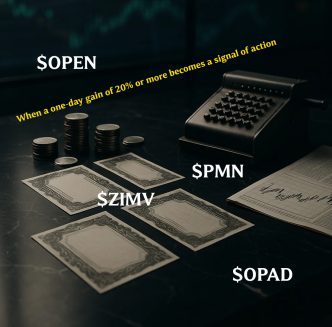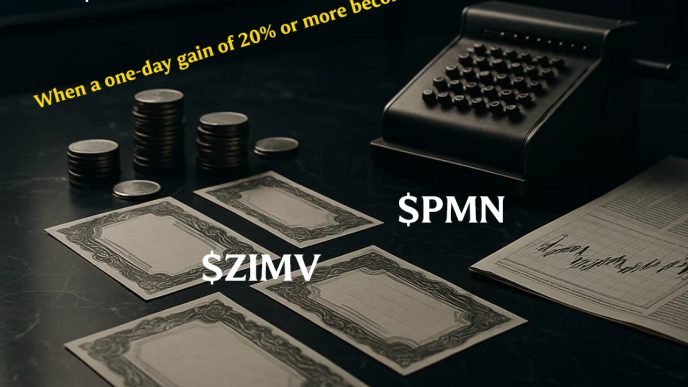How stock splits work and why large companies do them
When stocks are skyrocketing in value, some companies choose to make them more affordable, and that’s when a stock split comes into play. This is not just an accounting transaction, but a subtle market gesture that can tell us a lot about management’s mood, investors’ perception of the company and, importantly, expectations for future growth.
The stock split itself is a reallocation. One expensive stock turns into several cheaper ones. For example, in a 2-to-1 split you get two $1000 securities instead of one for $2000. Nothing changes for the owner in monetary terms, but there is something more: flexibility, availability and, often, the attention of the market.
Interestingly, the question “what is a stock split ?” is increasingly being answered not by financial textbooks, but by high-profile market cases – especially when it comes to large-scale technology companies that use this tool as part of their strategy.
How stock splits work
Simple in execution, but with a serious psychological effect
The procedure looks quite mundane. The board of directors announces the intention to split, specifies the proportion (say, 4 to 1), sets a date for fixing the shareholders and starts the mechanism. After this date, all owners receive new shares in the account in proportion to their share.
Interestingly, such changes are not taxed – in fact, from the point of view of the financial mass, the investor has not added anything. But the perception of the asset fundamentally changes: the price per unit becomes lower, and the investor can afford to buy a whole share instead of a fractional one.
Most importantly, this works for a mass audience. That’s why the split effect is often more powerful than it seems at first glance. It makes the promotion psychologically appealing, and this sometimes becomes the catalyst for a surge of interest.
Why companies conduct splits
The number one reason is to make the stock more “retail investor friendly.” A stock priced at $2000 looks intimidating. But the same stock at $200 is already within reach. Not only does this stimulate interest, but it can also increase liquidity. The more potential buyers, the more active the trading and the higher the attention of analysts.
Companies in the technology sector, for example, are eager to use splits. This is not only a marketing tool, but also a subtle signal to the market about the intention to develop and grow. Sometimes a form of unspoken dialog with shareholders: “We are confident in ourselves, so we are taking a step towards investors”. A split can be part of a broader strategy to increase capitalization. It can attract new audiences, increase share turnover and increase analyst and media interest in the business. If you’re wondering what a stock split is and why it’s being done, pay attention to the behavior of the big players. They are not just splitting denominations, they are building a positioning strategy in the market.
Reverse split: when everything is the other way around
A maneuver dictated by necessity
There are also reverse splits – merging several low-priced stocks into one. Why? To avoid being delisted from the NYSE or Nasdaq if the price falls below the acceptable minimum. For example, ten shares at $0.50 can become one at $5.
Investors are wary of such moves. Reverse split often looks like an attempt to hide problems rather than a positive signal. However, sometimes it is a forced move to get a chance to restructure or change strategy without losing public status. If the initiative is accompanied by news of real changes in the business, it can be perceived positively.
High-profile case studies
Apple, Tesla, Amazon split shares in reality
Apple (APPL) did a 4-to-1 split in 2020, and the stock price soared in just over a week. Tesla, on a wave of hype around electric cars, did a 5-to-1. The result was record trading volumes and an army of new shareholders. Nvidia, too, resorted to splits during a period of strong growth.
Amazon (AMZN) split its shares 20 to 1 in 2022. It was one of the largest splits in recent years. While the company’s business remained the same, attention to its securities increased dramatically. Especially from those who previously couldn’t afford entry at $3,000 a share.
Examples of stock splits in 2025
The year 2025 has already brought some landmark examples. In June, semiconductor maker Broadcom (AVGO) announced a 10-to-1 split after its stock price rose above $1800. The decision aroused interest of both institutional and retail investors. The stock began to trade more actively, and the market responded positively: in the week after the split, the shares added another 6%.
Another case in point is Chipotle Mexican Grill (CMG). Its stock was trading above $3,000, and in March 2025, management approved a 50-to-1 split. That’s a rare scale: shareholders got 49 new securities for every old one. The split was accompanied by strong quarterly results and accelerated investor inflows.
Nvidia (NVDA) also made a tactical move – for the second time in four years. This time in a 10-to-1 format. Such a move looked like a confirmation of confidence in the sustainable growth of the business on the background of dominance in the field of artificial intelligence. It is indicative that the market reaction was almost instantaneous: demand for the company’s securities jumped on the back of strong revenue forecasts.


Impact of the split on investments
Psychology vs. math
The split does not affect the company’s fundamentals. Profit does not grow, revenue does not change. But attention to the stock is increasing, especially from retail investors and short-term speculators.
This can give the stock a boost, especially if the split is accompanied by positive news or a strong report. Not surprisingly, as mass access and hype around “affordable” stocks often leads to overheating – and this needs to be taken into account when forming a strategy.
On the other hand, over the long haul, it’s the business that decides everything. If the company has revenue growth, competitive advantage and good management – the split will be just a pleasant episode. If not, no marketing gimmick will save it from market pressure.
What’s important to remember about stock splits
An investor focused only on the price of a single stock runs the risk of missing the main point. An expensive stock can be cheap on multiples, and a cheap stock can be overvalued.Stock splits are about increasing the number of securities, not magic. But when combined with a strong brand, transparent reporting and growth prospects, it can be a driver for a new round of interest.
If you follow corporate news, splits are a trader’s signal worth paying attention to. Especially if it doesn’t occur in isolation, but as part of a comprehensive growth strategy.
Finally, if you’re still wondering what a stock split is, it’s primarily a tool that companies use to open up new opportunities to engage with the market.
Want to learn more about market fundamentals? We also recommend our in-depth article on the 10-year U.S. Treasury bond yield – another key indicator for investors shaping the trajectory of capital flows and stock market sentiment.
A Final Look: for beginners and experienced investors alike
Stock splits are not just a technical operation, but an important component of market dynamics that can provide both short-term impulses and become part of a long-term investment strategy. For beginners, it is a way to enter the securities of an interesting company without the need to buy expensive lots. And for experienced investors it is a full-fledged signal that can be built into the analysis of the issuer’s behavior, especially when assessing growth prospects and market reaction.
For those who actively trade shares, it is important to follow the announcements of splits, because it is during such periods that the liquidity of securities and volatility can increase sharply. This creates interesting opportunities for speculative or medium-term trading. And if you’re foundation-oriented, a split may be one indicator of management’s confidence in future performance. With the right approach and comprehensive analytics, it’s another puzzle piece in the overall capital growth picture.
If you are interested in long-term strategies and follow the dynamics of the US stock market, be sure to check out our analytical article “CRISPR and biotech equity investments as a new growth vector”. It explores promising areas in genetic engineering that are already shaping the agenda for institutional and private investors. This is an excellent addition to your understanding of stock splits, especially if you want to gain a deeper insight into how technological innovations affect stock prices and behavior in the market.














